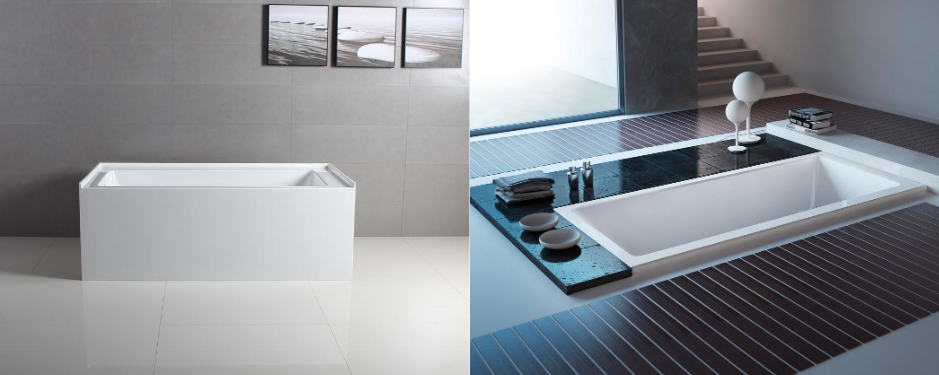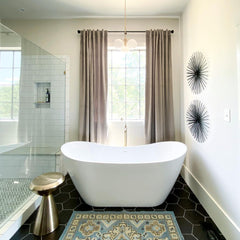
Alcove Tubs vs. Drop-in Bathtubs Vs Freestanding Tubs
When it comes to choosing the perfect bathtub for your bathroom, it's easy to be captivated by the allure of deep soakers and elegant clawfoot designs. However, for most homeowners, the decision often boils down to two classic styles that offer practicality for everyday use: the alcove tub and the drop-in tub. To make an informed choice between these common bathtub types, it's important to compare their features and requirements.
Alcove Bathtub: Benefits and Drawbacks

Alcove tubs have a strong presence in older tract homes as they were the primary style before shower enclosures became commonplace. These tubs are typically surrounded by two or three walls, with the option of replacing one wall with a pony wall or a divider such as a storage cabinet. They are self-supporting and feature a finished front apron, but they still require framed walls on two to three sides for additional support. This configuration allows for the creation of a shower enclosure if desired, or it simply adds a sense of coziness to the bathroom.
Unfortunately, the tightly enclosed nature of alcove tubs also limits the available space for the bather. The size of the tub is determined by the pre-existing walls, which can restrict the homeowner's choices in terms of length and width. However, by selecting a deeper tub, bathers can enjoy better water coverage during their bathing experience. After all, who wants to take a bath when their knees are sticking out of the water?

To provide even more options, Kingston Brass has recently introduced a new addition to their product line: the 2-wall corner alcove tub. As the name suggests, this tub only requires two walls for installation, making it suitable for any corner placement.
Drop-in Tub: Advantages and Disadvantages

Drop-in tubs offer unparalleled flexibility as they are not limited to being placed along the walls. They are sold as pre-formed tub shells that require a custom-built frame and enclosure for support. This allows homeowners to position them practically anywhere, as long as a suitable platform or enclosure can be constructed. While placing a drop-in tub against one wall reduces the amount of finishing work needed for the enclosure, it is not a requirement.
Although drop-in tubs may cost slightly more to install compared to alcove tubs, they provide bathers with a different experience. The open design can initially feel exposed to those accustomed to being surrounded by walls during their bathing rituals. It's important to note that drop-in tubs should not be confused with freestanding tubs, as the latter requires no further enclosure and is finished on all sides.
Freestanding Tubs

For homeowners who appreciate the flexibility of placement offered by drop-in tubs, freestanding bathtubs may be desirable alternatives. These tubs are finished on all sides and only require the necessary plumbing connections to complete the installation. However, it's worth mentioning that freestanding tubs often come at a higher cost compared to drop-in or alcove tubs. As a compromise, a drop-in tub can provide the benefits of both styles. Traditionally, freestanding tubs have been too large to fit into the space of an alcove tub. However, there are now ergonomically designed tub options available with smaller dimensions, such as 47" x 28" and 26" in height, offering homeowners more choices.
At Kingston Brass, we offer a wide range of tub options to suit your preferences. Whether you're looking for alcove tubs, drop-in tubs, or classic clawfoot bathtubs, our selection has you covered. Explore our collection and choose the perfect tub that will enhance relaxation and elevate your bathing experience to new heights.
